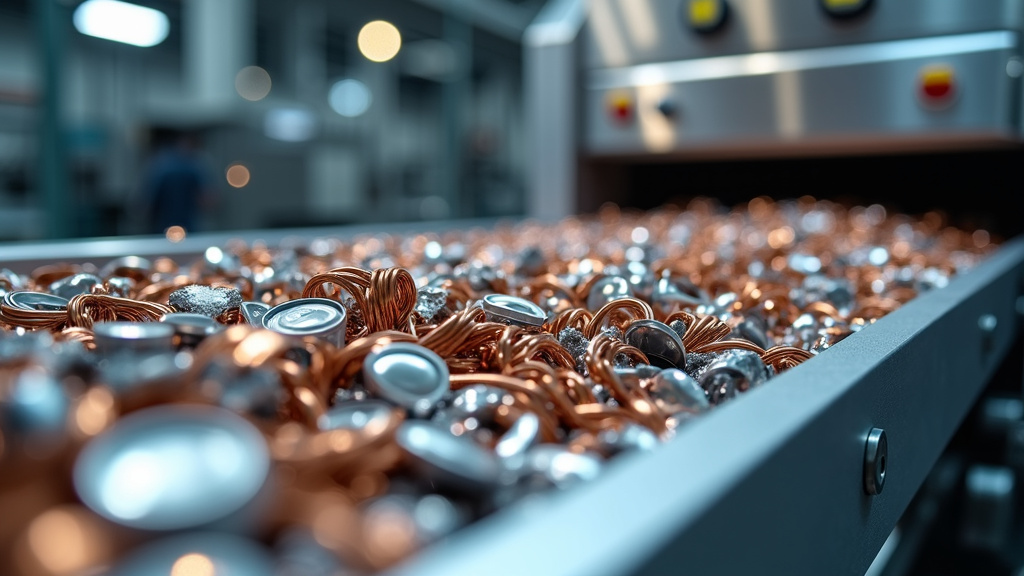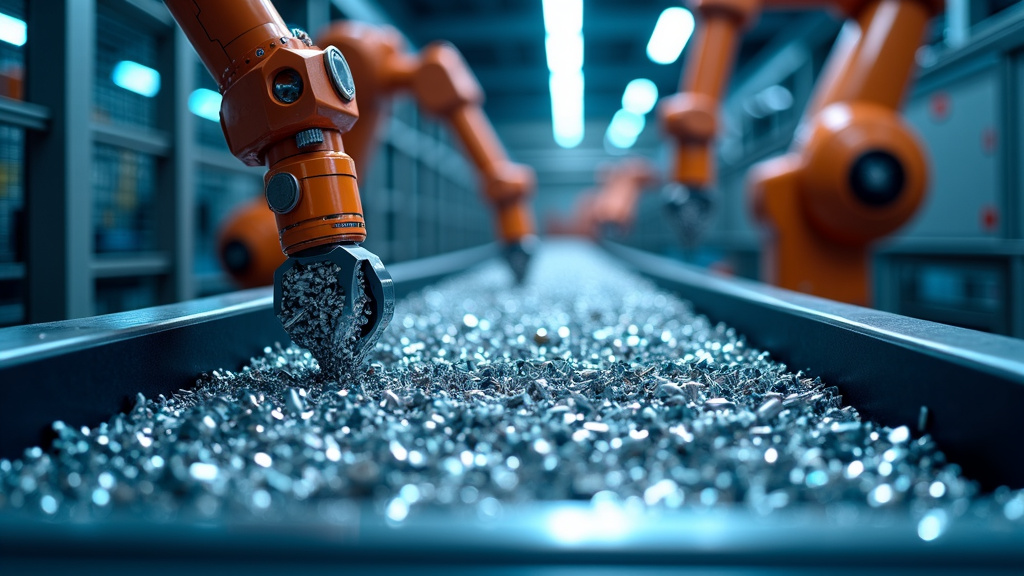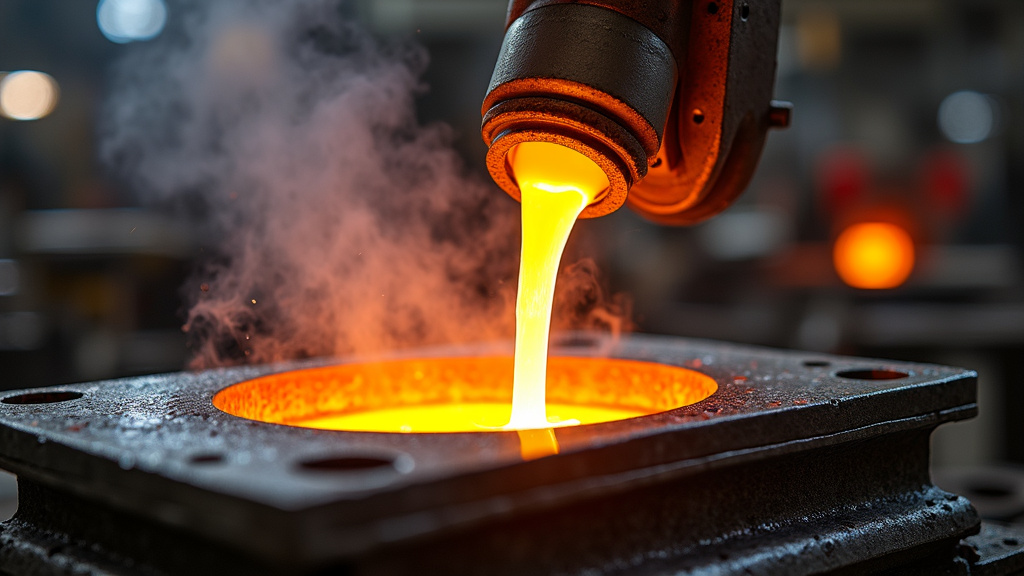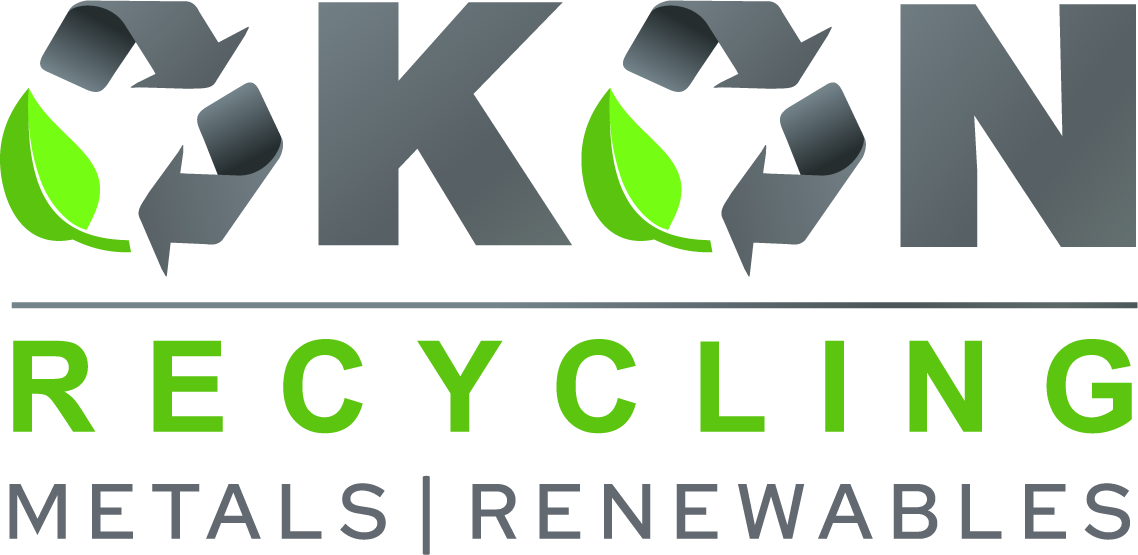5901 Botham Jean Blvd, Dallas, TX 75215
The Lifecycle of Recycled Industrial Metals
February 6, 2025Metal waste isn’t the end of the line; it’s the beginning of a new lifecycle. Instead of piling up in landfills, industrial metals are continuously reborn, fueling industries while conserving finite resources and reducing environmental impact.
The lifecycle of recycled metals is a testament to both human ingenuity and sustainability. From collection to processing, each step ensures that valuable materials—whether aluminum, steel, or copper—are recovered and reintroduced into the supply chain, cutting emissions and energy use compared to primary metal production.
Leading this transformation is Okon Recycling, a company dedicated to maximizing metal recovery while minimizing waste. By refining scrap into high-quality raw materials, Okon helps industries meet sustainability goals without compromising efficiency.
At the core of this process are advanced sorting, purification, and remanufacturing technologies that give discarded metals a second life. As we explore the journey of recycled industrial metals, we’ll uncover how this closed-loop system is shaping a greener, more resilient future.
Collection and Sorting of Recycled Metals: A Crucial Step in Sustainable Resource Management

The journey of recycled metals begins long before they’re melted down and reborn as new products. It starts with a critical phase: collection and sorting. This process, often overlooked, plays a pivotal role in ensuring the quality and efficiency of metal recycling.
Let’s explore the fascinating world of metal recycling’s first steps.
The Collection Stage: Gathering Sustainable Solutions
Picture this: mountains of discarded appliances, rusty car parts, and tangled wires. These aren’t just eyesores; they’re goldmines of recyclable materials. The collection stage is all about tapping into these urban mines. Businesses and households are increasingly offered convenient options for disposing of their metal waste responsibly.
Scrap metal collection services have evolved to meet this growing need. Companies like Scrap Metal Collection now offer fast, efficient, and eco-friendly pickup services for both residential and commercial clients. This approach not only clears clutter but also puts money back in people’s pockets while contributing to a cleaner environment.
But it’s not just about convenience. The collection stage is crucial for ensuring that valuable metals don’t end up in landfills where they can leach harmful substances into the soil and groundwater. By providing accessible collection services, we’re taking a significant step towards sustainable resource management.
Sorting: Where Technology Meets Sustainability
Once collected, the real magic begins. Sorting is where cutting-edge technology transforms a jumble of mixed metals into neatly separated streams ready for recycling. It’s a process that would make any tech enthusiast’s heart skip a beat.
At the forefront of this technological revolution is Eddy Current Separation. This isn’t your grandfather’s sorting method – it’s a sophisticated system that harnesses the power of electromagnetism to efficiently separate ferrous (magnetic) from non-ferrous metals.
Here’s how it works: as the mixed metal scrap travels along a conveyor belt, it passes through a powerful magnetic field generated by a rapidly spinning rotor. This field induces electrical currents (called eddy currents) in the non-ferrous metals. These currents, in turn, create their own magnetic fields that oppose the original field, causing the non-ferrous metals to be literally thrown off the belt into a separate collection bin.
It’s like watching a miniature electromagnetic ballet, with different metals dancing to their own tune. The precision of this process ensures that high-quality, pure streams of different metals are produced, ready for recycling into new products.
| Technology | Principle | Advantages | Limitations |
|---|---|---|---|
| XRF (X-Ray Fluorescence) | Uses X-rays to excite electrons in materials’ atoms, causing them to emit secondary X-rays characteristic of the elements present. | Accurate at sorting metals, alloys, ceramics, polymers, and glass. Minimal maintenance due to no moving parts. Capable of sorting heavy metals into high purity products. | Difficulty with light metals like silicon and magnesium. |
| XRT (X-Ray Transmission) | Separates materials based on their absorption characteristics by directing an X-ray beam through a sample and measuring absorption. | Quick, precise, and non-destructive. Can remove lighter elements. | Prone to breakdown due to moving parts. Cannot further sort heavy metals into individual elements and alloys. |
| DMS (Dense Media Separation) | Uses density to separate materials, with heavier items sinking and lighter items floating. | Efficient for recovering aluminum from heavy metals. Long-lasting system with minimal need for upgrades. | Limited in distinguishing between distinct types of metals. Tanks require significant space and maintenance. |
Why Does This Matter?
You might be wondering, “Why go through all this trouble?” The answer lies in the quality of the recycled metal.
Pure, well-sorted metal streams are essential for producing high-grade recycled materials that can compete with virgin metals in quality and performance. This not only conserves natural resources but also significantly reduces the energy required to produce new metal products.
Moreover, efficient sorting technologies like Eddy Current Separation make metal recycling more economically viable. By automating the separation process, we can handle larger volumes of scrap metal more quickly and cost-effectively than ever before.
As we face growing concerns about resource depletion and environmental impact, the importance of effective metal collection and sorting cannot be overstated. It’s a critical link in the chain of sustainable resource management, turning what was once considered waste into valuable raw materials for the future.
Next time you toss a soda can into the recycling bin or watch a scrap metal truck drive by, remember the incredible journey that metal is about to embark on. From collection to high-tech sorting, every step brings us closer to a more sustainable, resource-efficient world. And that’s something we can all get excited about.
Reclamation and the Future of Metal Recycling

Metal reclamation leads sustainable industrial practices by transforming discarded materials into valuable resources. This process involves melting processed metals and reshaping them for diverse applications across industries. Looking to the future, groundbreaking technologies are set to transform the entire recycling lifecycle.
Artificial intelligence (AI) is rapidly becoming a pivotal force in metal recycling. Advanced AI-driven sorting systems enhance the precision and speed of metal identification and separation. These smart technologies utilize sensors, cameras, and machine learning algorithms to analyze metal properties with remarkable accuracy, significantly reducing misidentification and improving the purity of sorted metals.
The integration of AI extends beyond sorting. It’s reshaping entire recycling facilities into smart, interconnected ecosystems. Imagine a recycling plant where every process, from intake to final processing, is optimized in real-time by AI. This integration promises to dramatically boost efficiency, minimize waste, and reduce energy consumption throughout the recycling process.
Innovations Driving Sustainability
Beyond AI, other technological advancements are pushing the boundaries of what’s possible in metal recycling. Electrochemical and hydrometallurgical processes offer cleaner, more energy-efficient alternatives to traditional smelting methods. These innovative techniques use chemical reactions in liquid solutions to extract metals, significantly reducing emissions and energy requirements.
Urban mining is another concept gaining traction in the recycling world. As cities grow, they become rich sources of metals from discarded electronics and aging infrastructure. Advanced recovery methods, including bioleaching – which uses microorganisms to extract metals – are making urban mining more viable and environmentally friendly than ever before.
Blockchain technology is also making waves in the industry. By creating transparent, immutable records of metal sourcing and processing, blockchain enhances traceability and combats issues like metal theft and counterfeit recycled materials. This technology not only improves accountability but also builds trust among consumers and industries relying on recycled metals.
A Sustainable Vision for the Future
The future of metal recycling is promising, with these emerging technologies paving the way for a more circular and sustainable economy. As recycling processes become more efficient and environmentally friendly, the demand for recycled metals is likely to soar across various industries, from construction to electronics manufacturing.
Moreover, these advancements are creating new job opportunities in tech-focused roles within the recycling sector. From AI specialists to blockchain experts, the industry is attracting diverse talent, further driving innovation and growth.
As these transformative technologies are embraced, the metal recycling industry is poised to play an even more crucial role in conserving natural resources, reducing carbon emissions, and supporting global sustainability goals. The journey toward a fully optimized, sustainable recycling ecosystem is well underway, promising a greener, more resourceful future for generations to come.
| Recycling Method | Traditional Techniques | Innovative Techniques |
| Sorting | Manual sorting | Automated sorting with sensors and AI |
| Separation | Shredding and melting | Eddy current separation, LIBS, hydrometallurgical processing |
| Recovery | Basic shredding | Advanced shredding and granulation |
| Efficiency | Labor-intensive, less precise | Higher efficiency, better purity |
| Environmental Impact | Higher energy consumption | Reduced emissions and energy use |
Concluding the Lifecycle of Recycled Industrial Metals

The journey of recycled industrial metals proves that sustainability isn’t just an option—it’s a necessity. From collection to transformation, every step conserves natural resources, reduces emissions, and fuels a circular economy that benefits both the environment and industry.
Companies like Okon Recycling are leading this charge, turning discarded metals into valuable materials that power manufacturing, construction, and innovation. Their state-of-the-art facilities in Dallas, Texas, showcase how advanced recycling technologies can maximize resource recovery while minimizing waste.
The impact is undeniable: recycling one ton of steel saves 2,500 pounds of iron ore, 1,400 pounds of coal, and 120 pounds of limestone—drastically cutting energy use and environmental strain. By choosing sustainable metal management, industries reduce costs, meet environmental regulations, and contribute to a thriving green economy.
The future of industrial metal recycling depends on collective action. Whether optimizing waste management for your business or simply choosing to recycle household metals, every effort moves us closer to a zero-waste future.
Okon Recycling is here to help. Their experts provide tailored solutions to ensure that discarded materials find new purpose and value. Contact Okon Recycling at 214-426-6566 and join the movement toward a cleaner, greener, and more resource-efficient world. The time to act is now—let’s make sustainability the standard.
